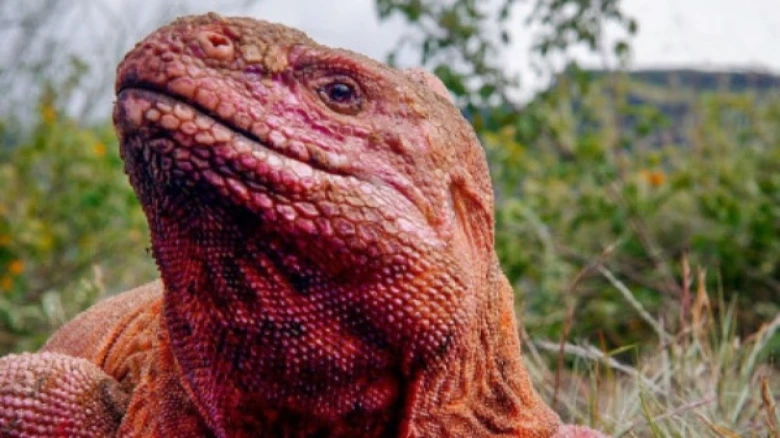The iguana is highly endangered and only a few hundred remain on the slopes of Wolf Volcano on Isabela Island in the Galapagos...
Digital Desk: For the first time since the species' discovery decades ago, scientists have uncovered hatchling and juvenile populations of the Galapagos pink land iguana, an endangered reptile native to a single island in the Ecuadorean archipelago.
The iguana, which is only found on the slopes of Wolf Volcano on Isabela Island in the Galapagos, is highly endangered, with only a few hundred left, according to estimates.
"This discovery represents a huge step forward, allowing us to establish a road ahead to conserve the pink iguana," Galapagos National Park Director Danny Rueda said in a statement on Tuesday.
National park rangers discovered the iguanas, which can grow to be 18.5 inches (47 cm) long, in 1986. However, it took experts decades to recognise the pink iguana as a distinct species from the others on the island.
According to the national park, introduced animals on the island, mainly rats, are threatening their existence.
"Knowing all of the characteristics that make their survival sensitive will allow us to take timely steps, particularly against invasive species, and so prevent interfering with the natural cycles of these fragile ecosystems," Rueda explained.
With its distinctive wildlife, the Galapagos Islands were a driving force behind British scientist Charles Darwin's theory of evolution. It is home to a number of unique animals, including gigantic tortoises, flightless cormorants, and various iguana species, notably the pink iguana.
The Wolf Volcano is one of the national park's most remote locations, with a research and monitoring station constructed at its base.

Leave A Comment